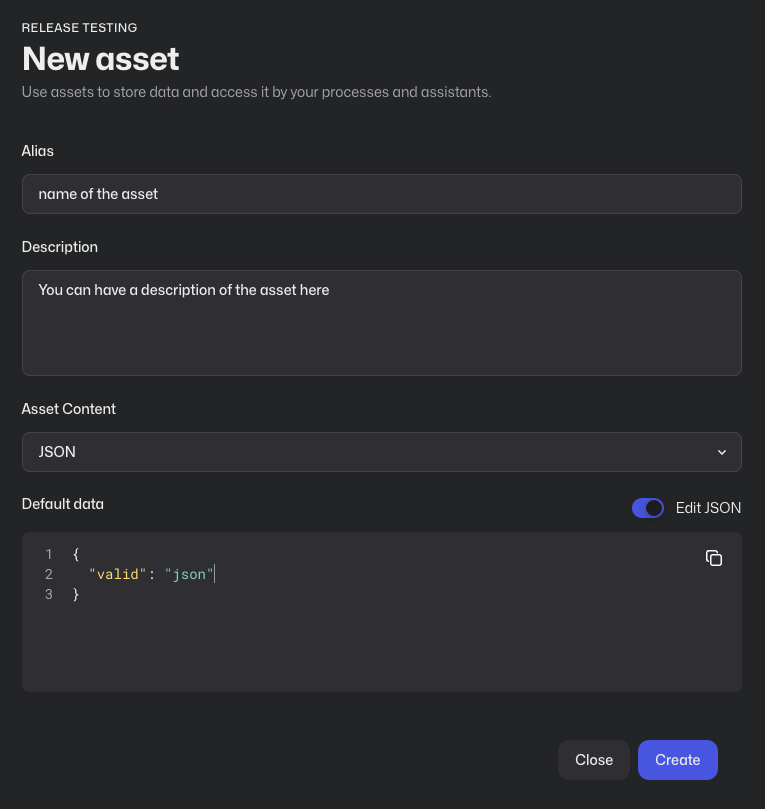Asset Storage
The Asset Storage stores data on a workspace scope that can be accessed via UI, API, or with keywords directly from the robots, supporting different types, such as Text, JSON, and files.
While the Vault should be used to store sensitive data like credentials or API keys, this is designed for non-sensitive data that is commonly accessed by users.
Example use cases
- Managing configuration data across automations in a centralised way instead of multiple environment variables in process steps (e.g. e-mail lists used by the robots)
- Sharing common input data across multiple processes (e.g. Excel sheet that multiple robots process different parts from)
- Storing user-facing reports that are updated by multiple processes (e.g. Excel sheet that is updated by multiple different processes)
- Storing process operational data that the work items are not suitable for due to their transactional nature
- Storing non-process items, like development guides, documentation, and company practices
- Storing prompt templates to be used by the robots using LLM integrations
Management and usage
Using assets on the Control Room
You can manage your workspace assets under the Assets menu item on the Control Room navigation. Each asset will need a unique name on the workspace scope. This name can then be used in your robots to refer to the asset and e.g. get the contents.

The UI allows you to manipulate the contents of text and JSON assets directly. For other formats you can upload files with the asset contents.
Using assets on the Robots
Your robots can interact with the assets using List Assets, Get Asset, Set Asset and Delete Asset
keywords in the RPA.Robocorp.Storage library.
There is no transaction handling or locking on the asset access, so multiple robots manipulating the same asset at the same time may do conflicting writes, resulting in an undeterministic outcome where either one can take place. However, the system protects the data integrity, so asset contents always correlate with one of the succesful asset updates.
Permissions
User permissions
Permission to use the Asset Storage is enabled by default for all users, but can be customized in Enterprise RBAC configurations if more fine-grained access is needed.
API Access
The Assets can be manipulated with Control Room API. The access to the Assets is governed with the
storage permissions read_asset_storage_assets and write_asset_storage_assets.

Capacity
The capacity of the Asset Storage starts from 10 Assets and a maximum of 20MB per Asset on the Developer tier and scales up to 100 Assets and 500MB per Asset on the Consumption tier. Custom packages are available for the Enterprise tier. For current information, please see Compare features section on the pricing page. The limits are enforced on a workspace basis.